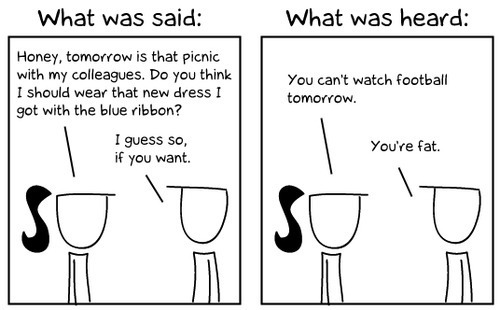These Are The Ten Rules You Need To Know To Communicate Effectively
.
Frank Luntz has “engineered some of the most potent political and corporate campaigns of the last decade.” His wordsmithing helped Republican Rudy Giuliani get elected twice in New York — a city where Democrats outnumber Republicans 5-to-1.
Luntz and his polling firm have learned a great deal about language by conducting nearly 1500 surveys and focus groups for a wide range of products and politicians.
The key takeaway from his book is actually part of the title:
It’s not what you say, it’s what people hear.
In Words That Work: It’s Not What You Say, It’s What People Hear Luntz breaks down the ten main lessons he’s learned from years of crafting political messages; lessons we can all learn from:
1) Simplicity: Use Small Words
Via Words That Work: It’s Not What You Say, It’s What People Hear:
“Avoid words that might force someone to reach for the dictionary… because most Americans won’t. They’ll just placidly let your real meaning sail over their heads or, even worse, misunderstand you. You can argue all you want about the dumbing down of America, but unless you speak the language of your intended audience, you won’t be heard by the people you want to reach.”
2) Brevity: Use Short Sentences
Via Words That Work: It’s Not What You Say, It’s What People Hear:
“Be as brief as possible… The most memorable political language is rarely longer than a sentence. “I Like Ike” was hardly a reason to vote for the man, but the simplicity of the slogan matched the candidate and the campaign.”
3) Credibility Is As Important As Philosophy
Via Words That Work: It’s Not What You Say, It’s What People Hear:
“People have to believe it to buy it. As Lincoln once said, you can’t fool all of the people all of the time. If your words lack sincerity, if they contradict accepted facts, circumstances, or perceptions, they will lack impact… The words you use become you — and you become the words you use.”
4) Consistency Matters
Via Words That Work: It’s Not What You Say, It’s What People Hear:
“Too many politicians insist on new talking points on a daily basis, and companies are running too many different ad executions. By the time we begin to recognize and remember a particular message, it has already been changed… “The breakfast of champions” tagline for Wheaties was first launched back in 1935 and is still going today. Hallmark’s “When you care enough to send the very best” debuted in 1934, and “Say it with flowers” for FTD dates all the way back to 1917.”
5) Novelty: Offer Something New
Via Words That Work: It’s Not What You Say, It’s What People Hear:
“In plain English, words that work often involve a new definition of an old idea… What matters most is that the message brings a sense of discovery, a sort of “Wow, I never thought about it that way.”
6) Sound and Texture Matter
Via Words That Work: It’s Not What You Say, It’s What People Hear:
“The sounds and texture of the language should be just as memorable as the words themselves. A string of words that have the same first letter, the same sound, or the same syllabic cadence is more memorable than a random collection of sounds.”
7) Speak Aspirationally
Via Words That Work: It’s Not What You Say, It’s What People Hear:
“Messages need to say what people want to hear… The key to successful aspirational language for products or politics is to personalize and humanize the message to trigger an emotional remembrance.”
8) Visualize
Via Words That Work: It’s Not What You Say, It’s What People Hear:
“Paint a vivid picture. From M&M’s “Melts in your mouth not in your hand” to Morton Salt’s “When it rains, it pours,” to NBC’s “Must See TV,” the slogans we remember for a lifetime almost always have a strong visual component, something we can see and almost feel.”
9) Ask a Question
Via Words That Work: It’s Not What You Say, It’s What People Hear:
“Is it live, or is it Memorex?” “Where do you want to go today?” (Microsoft) “Can you hear me now?” (Verizon Wireless)… “Got Milk?” may be the most memorable print ad campaign of the past decade. The creator realized, whether intentionally or not, that it’s sometimes not what you say but what you ask that really matters.”
10) Provide Context and Explain Relevance
Via Words That Work: It’s Not What You Say, It’s What People Hear:
“You have to give people the “why” of a message before you tell them the “therefore” and the “so that.”… if it doesn’t matter to the intended audience, it won’t be heard. With so many messages and so many communication vehicles competing for our attention, the target audience must see individual, personal meaning and value in your words.”
Join over 145,000 readers and get my free weekly email update here.
Related posts:
How To Stop Being Lazy And Get More Done – 5 Expert Tips
What 10 things should you do every day to improve your life?




